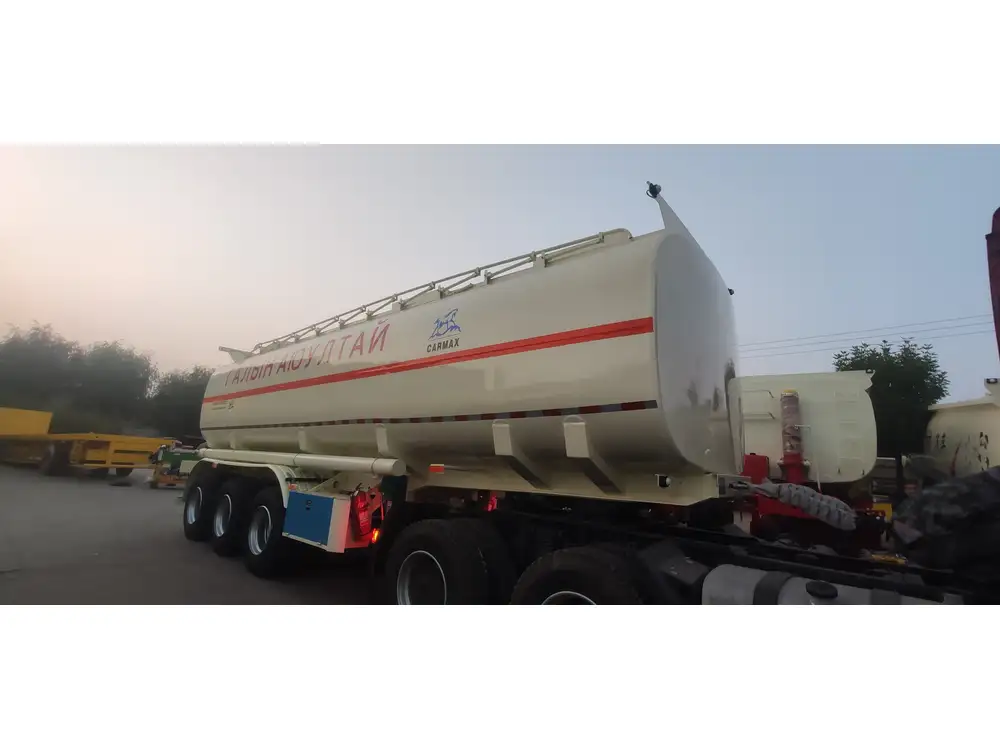Moving a 40-foot cargo container from a trailer to the ground is a task that requires planning, precision, and the right equipment. Understanding the process not only ensures safe handling but also helps avoid damage to the container or equipment, as well as preventing potential injuries. In this comprehensive guide, we will detail the best practices, equipment needed, and step-by-step instructions on how to safely and effectively get a 40-foot cargo container off a trailer.
Equipment Required for Handling Cargo Containers
- Forklifts: Heavy-duty, high-capacity forklifts are ideal for lifting containers. Ensure the forklift has an adequate load capacity, typically above 10,000 lbs.
- Crane: When dealing with larger containers, cranes may be necessary. Popular options include mobile cranes and overhead cranes, which provide the height and stability required for such operations.
- Container Chassis: A specialized semi-trailer designed specifically for carrying containers can facilitate the movement and stability during unloading.
- Container Lifting Slings: These come in various materials (synthetic webbing, chain, etc.) and are important for securing the container during lifting.
- Wheel Chocks: To prevent movement during unloading, wheel chocks should be placed behind the trailer wheels.
- Safety Gear: Helmets, gloves, steel-toed boots, and vests must be worn to ensure safety procedures are adhered to during unloading.
Safety Precautions Before Unloading
Before commencing the unloading process, it is crucial to take several safety precautions:
- Inspect All Equipment: Ensure that all forklifts, cranes, and lifting gear are in good working condition. Check for any signs of wear and tear.
- Site Assessment: The area where the container will be unloaded must be level and free of obstructions. Confirm that there are no overhead power lines or underground utilities.
- Establish Clear Communication: Clearly define roles among the crew members involved in the unloading process. Use radios or other communication devices to relay important information during the operation.
- Establish Barricades: Create a safe perimeter around the unloading area to keep unauthorized personnel at a safe distance.

Step-by-Step Process for Unloading a 40-Foot Cargo Container
Step 1: Positioning the Trailer
- Align the Trailer: Ensure that the trailer is parked on a flat surface and aligned with the unloading area. Use wheel chocks behind the trailer wheels to prevent movement during unloading.
- Raise the Landing Gear: Adjust the trailer’s landing gear to lower the body of the trailer as close to the ground as possible.
Step 2: Prepare the Lifting Equipment
- Select the Appropriate Equipment: Depending on the available machinery, choose between a forklift or a crane. Ensure that it is positioned appropriately to reach the cargo container.
- Attach Lifting Slings if Required: For crane operations, loop the lifting slings securely around the container. Ensure that slings are rated for the weight of the container.

Step 3: Check Load Balance and Stability
- Balance Check: Before lifting, ensure the load is balanced. Containers can shift, so inspect and adjust the lifting slings or fork position to ensure an even distribution.
- Stability Assurance: Confirm the area beneath the container is free from debris or obstacles that could cause it to tip during the lift.
Step 4: Lifting the Container
- Controlled Lift: Slowly raise the container off the trailer. Whether using a crane or forklift, maintain control and avoid jerky motions.
- Monitor Load: Personnel should monitor the cargo while it’s being lifted. If there seems to be any instability, lower the load back onto the trailer to reassess.
Step 5: Moving the Container
- Clear Path: Ensure that the path to the designated spot is clear. Establish communication with ground personnel to direct the forklift or crane operator.
- Move Gradually: Move the container to the ground at a steady pace. Abrupt movements can lead to accidents.

Step 6: Lowering the Container
- Careful Descent: Once in position, lower the container slowly and smoothly. Monitor for any shifts in the load during the descent.
- Safeguard with Blocks: Once the container is on the ground, place wooden blocks or dunnage on either side to stabilize it and prevent movement.
Step 7: Post-Unloading Procedures
- Inspect the Container: After unloading, inspect the 40-foot cargo container for any damage incurred during the process.
- Organize for Pickup: If the trailer needs to be moved, ensure that all equipment used is stored safely and that the area is left free from debris.
Troubleshooting Common Issues

Uneven Ground
Issue: If the trailer is parked on an incline, unloading becomes more challenging.
Solution: Place wood blocks or steel plates beneath the landing gear to stabilize it, ensuring the trailer is level before unloading.
Load Shift
Issue: The container may shift during lifting due to imbalanced lifting points.
Solution: Reassess and position the lifting gear correctly to ensure that the container lifts evenly.
Insufficient Lifting Capacity
Issue: Machinery may not have the capacity to lift the container.
Solution: Always verify the specifications of the lifting equipment beforehand. If unsure, opt for hiring larger equipment or consult a professional.

Best Practices for Future Operations
- Regular Training for Operators: Continuous training for operators in both safety procedures and machinery handling is essential.
- Implementing Standard Operating Procedures (SOPs): Documented processes for unloading containers can help prevent accidents and ensure consistency.
- Communication Drills: Conduct regular drills to improve communication between staff during operations.
Conclusion
Successfully unloading a 40-foot cargo container off a trailer requires a comprehensive understanding of equipment, safety protocols, and the step-by-step process outlined above. By adhering to these detailed practices, the risk of accidents and equipment damage can be significantly reduced. Every unloading operation is unique, and having a robust plan and trained personnel will ensure that the task is carried out efficiently and safely. Following the guidelines provided will not only facilitate effective operations but also build a culture of safety and professionalism within the transportation and logistics industry.



